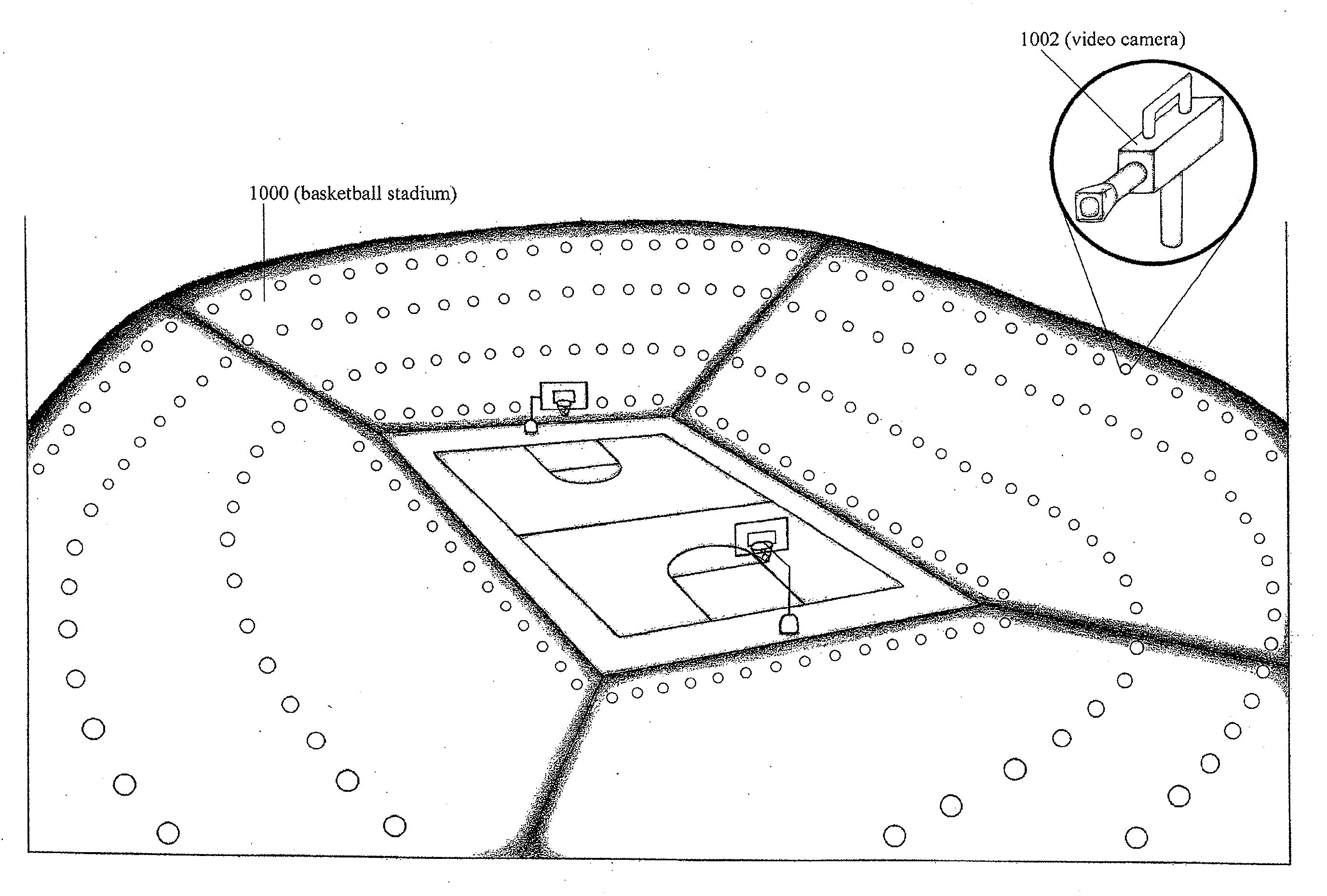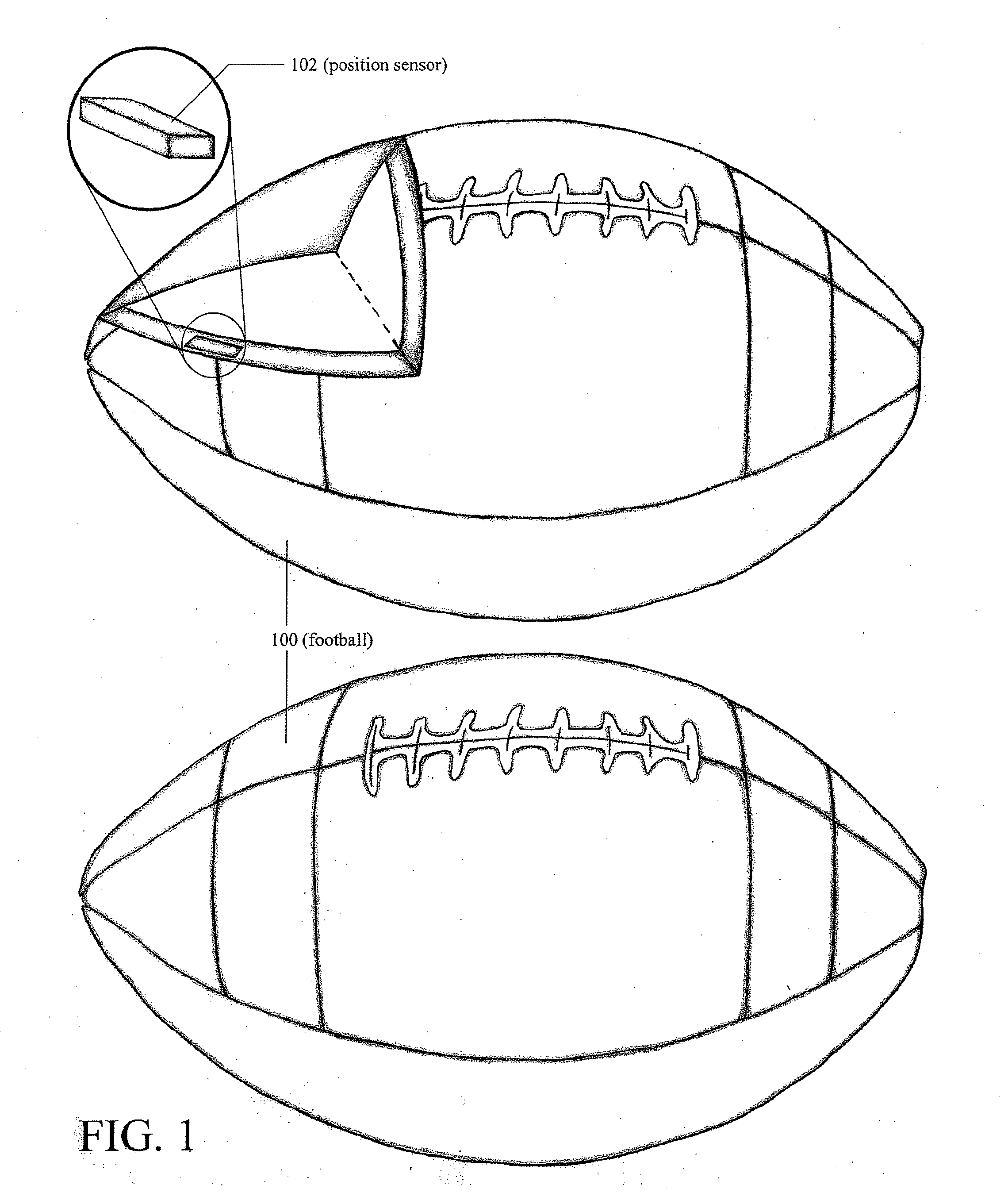Camera-based tracking and position determination for sporting events
a technology of position determination and camera-based tracking, applied in the field of camera-based tracking and position determination for sporting events, can solve the problems of difficult or in some cases impossible to determine the location of a ball during play, and the delay in this process can be relatively long, so as to improve player and ball position tracking, improve the effect of accurate rule enforcement and optimal coverag
- Summary
- Abstract
- Description
- Claims
- Application Information
AI Technical Summary
Benefits of technology
Problems solved by technology
Method used
Image
Examples
first embodiment
[0102]The system can have a variable range of integration with electronics and therefore can have varying degrees of complexity. For example, the simplest implementation or first embodiment, does not use software or player position information. The system also places various stationary and / or robotically controlled pan-tilt-zoom cameras around the event. The system then uses specialized hardware or FPGAs to implement a simple state machine to generate control signals and switch or multiplex the camera feed (from one camera to another) as the ball moves around the game of play. The different cameras are positioned to view the event from different locations around the event, and thus have different respective fields of view coverage, also referred to as field of view. The camera feed is the camera output (or video signal). The camera output may be video only, or the output may include video signal(s) or information, audio signal(s) or information, other data, or some combination of al...
second embodiment
[0104]The second implementation or second embodiment of the system (without software) determines the position information of the ball and the players in a game of play and uses those inputs to compute how to access the camera selection / switching, shot type, and camera angle decision. This implementation works in much the same fashion as the first implementation, but now has more inputs, player and ball position information, from which to generate control signals. The control signals then tell the system which cameras to use (camera selection) and how to direct the robotically controlled pan-tilt-zoom cameras by changing the pan, tilt, zoom and focus functions. The system is able to multiplex or select one of the different camera outputs appropriately.
third embodiment
[0105]The third implementation or third embodiment uses a CPU and software. This third implementation only uses the ball position information to select the appropriate camera output and video signal. The fourth implementation uses the ball and player position information. In the third and fourth implementations, the CPU and software give the designer more flexibility in changing how the system should operate as the software can be changed more easily than custom hardware or FPGAs. Likewise, the fourth implementation uses the ball and player position information inputs to select the camera output or video signal. The third and fourth implementations decide based on the input position information how to change the camera switching / selection, shot type, and camera angle based on the software package. The stationary and robotically controlled pan-tilt-zoom cameras provide camera outputs and video signals that the system selects from based on the input position information data.
[0106]The...
PUM
 Login to View More
Login to View More Abstract
Description
Claims
Application Information
 Login to View More
Login to View More - R&D
- Intellectual Property
- Life Sciences
- Materials
- Tech Scout
- Unparalleled Data Quality
- Higher Quality Content
- 60% Fewer Hallucinations
Browse by: Latest US Patents, China's latest patents, Technical Efficacy Thesaurus, Application Domain, Technology Topic, Popular Technical Reports.
© 2025 PatSnap. All rights reserved.Legal|Privacy policy|Modern Slavery Act Transparency Statement|Sitemap|About US| Contact US: help@patsnap.com



